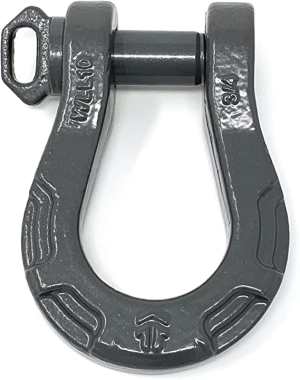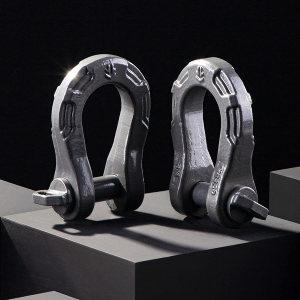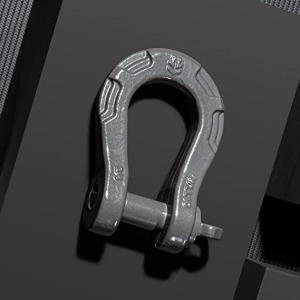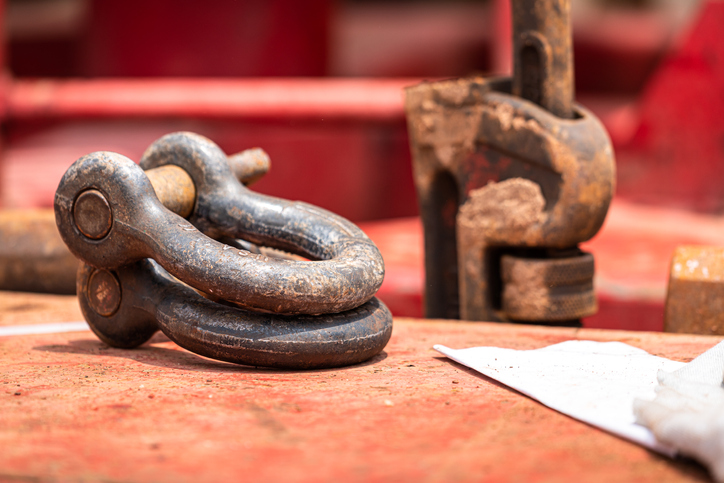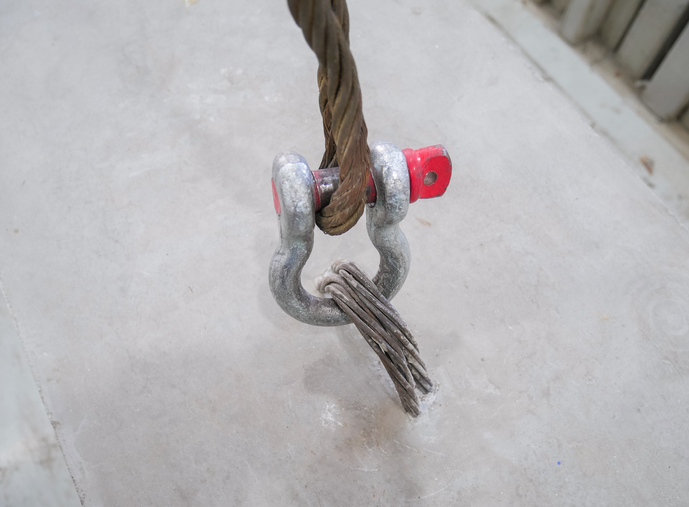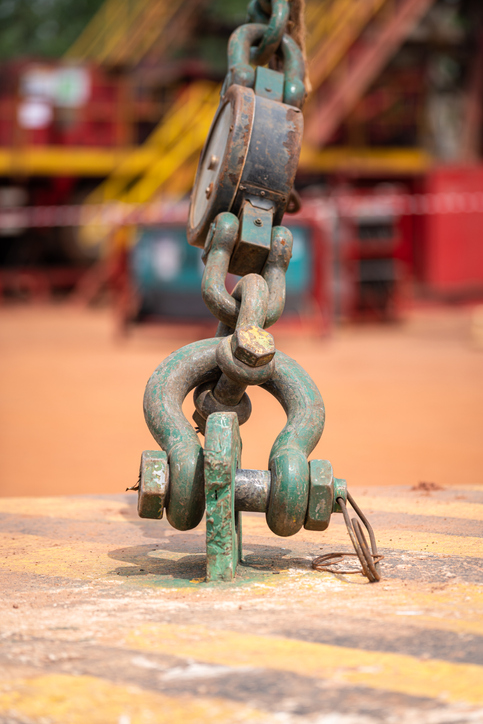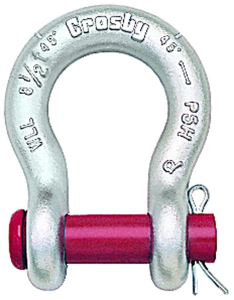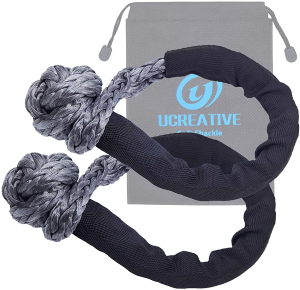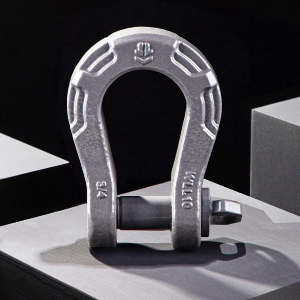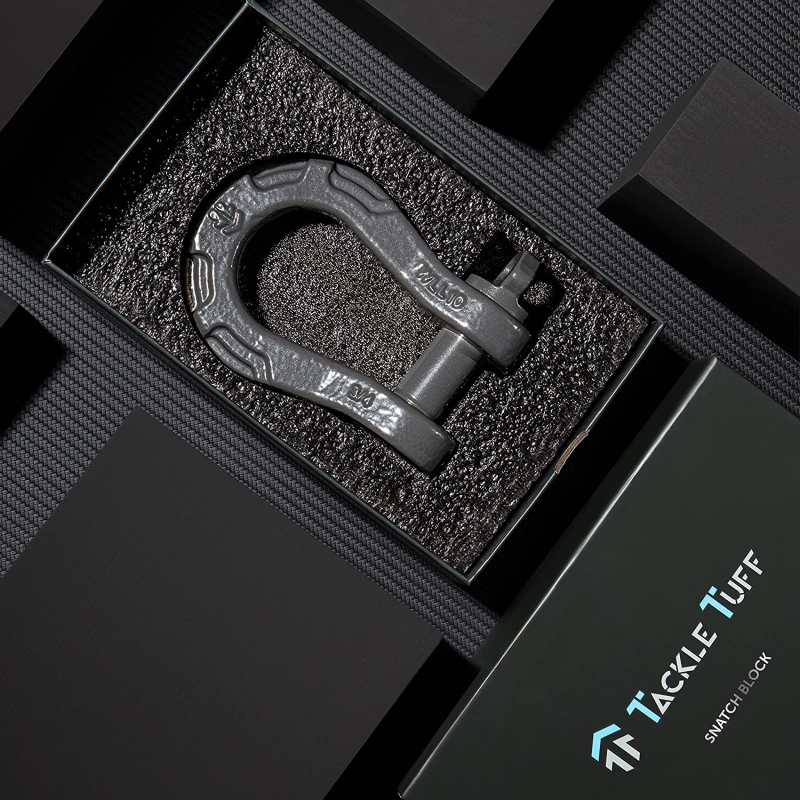Image Credit: Amazon
One of the most useful recovery tools is the shackle. It has a variety of different uses which make different types of recoveries possible.
As is the case with every recovery item, it is important to understand how the shackle is used to avoid damage to vehicles or people.
In this article, we’ll discuss what is a shackle, the different types available and which ones to use.
Table of Contents
- What is a Shackle?
- Different Types of Shackles
- Different Types of Pins
- Screw Pin Shackles
- Bolt-Type Shackles
- Round Pin Shackles
- Soft Shackles
- The Ideal Type for Off-Roading
- Final Thoughts
- Other Recommended Gear
What is a Shackle?
Image Credit: Amazon
A shackle, like the ones from Tackle Tuff shown above, is a U-shaped, load-bearing connecting device with a removable pin. In our case, they are used for off-road recoveries. However, in the industrial world, shackles can also be used for rigging, towing, lifting, hoisting, or tying down.
Just like other types of lifting equipment, shackles come in different designs and configurations. Therefore, trying to understand the correct type of shackle to use for your application can be confusing.
Guessing or choosing incorrectly can lead to failure and you do not want that to happen in the middle of a recovery.
The Different Types
Image Credit: Amazon
The first type of shackle available is the anchor or bow shackle.
Both above terms are used interchangeably and refer to a type of shackle that features a round “O” shaped bow. Because of the larger bow shape, this type of shackle can be used for side loading.
This is great for vehicle recoveries as sometimes we must pull at an angle to get a vehicle recovered.
Next on the list is a D shackle or chain shackle. This one, as the name suggests, is shaped like a D.
The D-shaped bow is narrower than the anchor shackles. As these shackles are designed and rated for in-line tension they should not be used for side loading. Side loading can lead to a bend or twist in the bow of the shackle.
In-line pulls mean that the center line of the load should always match the centerline of the shackle.
Different Types of Pins
Photo by Thank you for your assistance via iStock
When choosing a shackle it is important to consider the type of shackle pin that is used. Some types of pins are designed for overhead lifting and others are not.
Also, some pins allow quick connection and disconnection while others work better in a more permanent application.
In off-road recoveries we tend to move our shackles around a lot; therefore, a pin that enables quick connection and disconnection is the best choice.
Screw Pin Shackles
Photo by Toukung via iStock
This is the most common type of shackle in off-road applications. On a screw pin shackle, a threaded pin is passed through the body of the shackle and is then tightened down.
They are quick and easy to connect and disconnect so they are convenient for off-road use.
Screw pin shackles can be used in applications where side loading is present. However, you need to keep in mind that there will be a reduction in strength capacity.
Bolt-Type Shackles
Photo by Thank you for your assistance via iStock
Bolt-type shackles are a more secure shackle due to the nut and cotter pin which prevents the pin from coming loose.
Because of the design, bolt shackles are preferred in applications where the anchor bolt is expected to experience some rotation which can lead to loosening of the pin.
Round Pin Shackles
Round pin shackles use a round unthreaded pin secured in place with a cotter pin. Again, these are popular in applications where the pin is subject to twisting.
The lack of threads means that they aren’t as secure. They can only be used for inline towing applications and are not convenient for off-road recovery as no one wants to be fighting a cotter pin every time a shackle is needed.
Soft Shackles
Soft shackles are slowly starting to increase in popularity within the off-road world. The appeal is that they are lightweight, can be easily stored, and are safe in case of a failure as there are no steel objects to hit a car or person.
They are quick to use, strong, and cheap. A soft shackle should be in everyone’s recovery kit!
The Ideal Type for Off-Roading
The ideal shackles to use for off-roading are the soft and bow shackles. As mentioned above, off-roading requires a type of shackle that is quick to rig up and can take side loads.
One of the best bow shackles available is made by Tackle Tuff. This bow shackle has a max breaking strength of 60,000 lbs and a 10-ton workload limit.
The design, strength, and finish make sure it will work great with recovery straps while also being able to last a long time.
This D-ring shackle is ¾” and has a ⅞” threaded pin and rubber isolators. These shackles can be used in a variety of applications with different types of recovery gear, including:
- Tow straps
- Tree-savers
- Winches
- Snatch blocks
- Receiver hooks
Additionally, Tackle Tuff offers a limited lifetime warranty for added peace of mind. And for what it’s worth, Tackle Tuff products are extremely well-designed and well-made, offering you a reliable recovery experience. I should know – I used my Tackle Tuff recovery kit to get unstuck on the trail, as you can see in my video below:
For a soft shackle, we would recommend going for the Ucreative synthetic soft shackle. These have a breaking strength of 43,000lbs and have received a 5-star rating on Amazon; therefore, you can be sure that these will work as intended.
Final Thoughts
Image Credit: Amazon
As you can see, shackles come in all types and forms. It is important to be aware of all of them to avoid buying mistakes that can lead to frustration or failure when using them for recovery.
If you have any further questions regarding shackles or for anything else off-road or overland related, head over to the forum section of our page.
Other Recommended Gear



